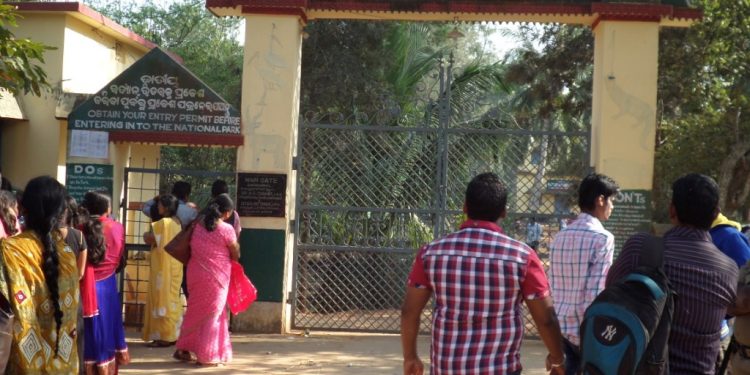Kendrapara: The Union Ministry of Environment, Forest and Climate Change (MoEFCC) has recently unveiled the draft notification for an Eco-Sensitive Zone (ESZ) covering 209 villages with a population of about 2.75 lakh around Bhitarkanika National Park and Gahirmatha Marine Sanctuary in Odisha’s Kendrapara district and its nearby areas.
Bhitarkanika is known as the second largest mangrove forest in India after Sundarbans and Gahirmatha is known as the world’s largest rookery of sea turtles.
The Eco-Sensitive Zone shall be 497.67 square kilometre with an extent of 0.10 kilometre to 8.7 kilometre around the boundary of Bhitarkanika National Park, Bhitarkanika Wildlife Sanctuary and Gahirmatha (Marine) Wildlife Sanctuary, said assistant conservator of forest (ACF) of the national park, Manas Das.
Eco-sensitive zone (ESZ) is a buffer area covering 205 villages of Aul, Pattamundai, Rajnagar, Rajkanika and Mahakalapada blocks in Kendrapara district and Chandabali block in Bhadrak district around the core protected forest areas to minimize human-wildlife conflict, promote in-situ conservation of wildlife and reduce the impact on fragile ecosystems, Das said.
The MoEFCC has invited suggestions or objections to the proposed eco-sensitive zone (ESZ) by August 9, 2024.
The proposed ESZ will cover an area of 497.67 square km under Aul, Pattamundai, Mahakalapada, Rajkanika and Rajnagar blocks in Kendrapara district and Chandabali block of Bhadrak district which includes 205 villages.
According to the notification, the Bhitarkanika area has the largest natural population of estuarine crocodiles in India and is known for its reptilian diversity. The area has the largest heronry in Asia, which is an annual activity during monsoon and winter migrants visit the Bhitarkanika wetland every year.
Bhitarkanika is also the second Ramsar site in the state and the Gahirmatha marine sanctuary is globally known for mass nesting of Olive Ridley sea turtles.
The draft notification mentions that a zonal master plan will be prepared in two years. The land of the locals cannot be utilized for commercial or industrial activities without obtaining the state’s approval.
The master plan shall provide for restoration of denuded areas, conservation of existing water bodies, management of catchment areas, watershed management, groundwater management, soil and moisture conservation, needs of the local community and such other aspects of the ecology and environment that need attention.
New construction of hotels and resorts will not be allowed within one kilometre from the boundary of the protected area or up to the extent of the Eco-sensitive zone, whichever is nearer.
In the proposed ESZ, non-forestry activities, such as setting up of industries causing pollution, stone crushers, commercial mining, sawmills, shrimp farms, brick kilns, commercial use of firewood and hydroelectric power projects, are not allowed.
Some activities, such as construction of roads and the setting up of power lines, need permission from the MoEFCC. Only non-polluting industries can be allowed within the eco-sensitive zone.
All activities in the eco-sensitive zone shall be governed by the provisions of the Environment Act and the rules made there under including the Coastal Regulation Zone, 2011 and the Environmental Impact Assessment Notification, 2006 and other applicable laws including the Forest (Conservation) Act, 1980, the Indian Forest Act, 1927 and the Wildlife (Protection) Act 1972.
PTI







































